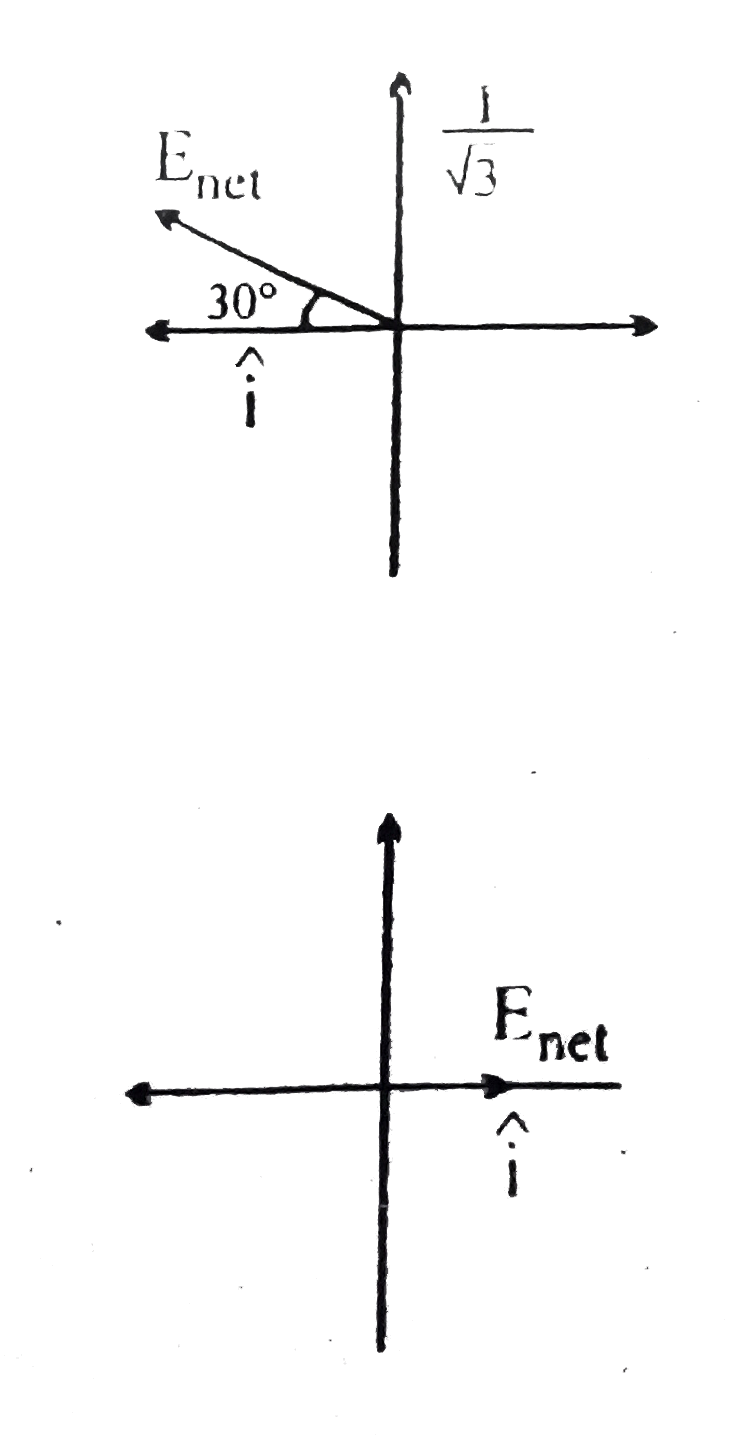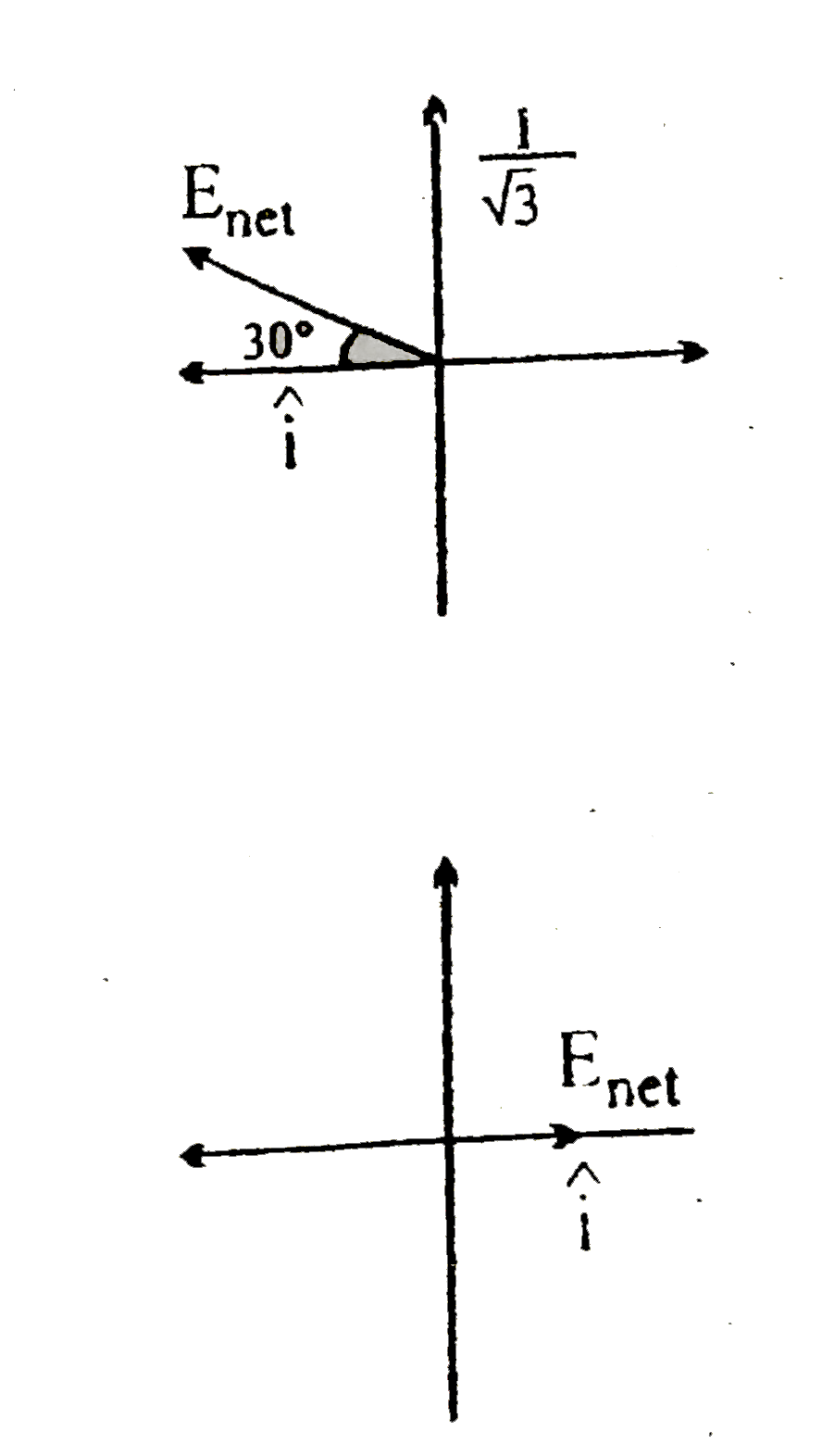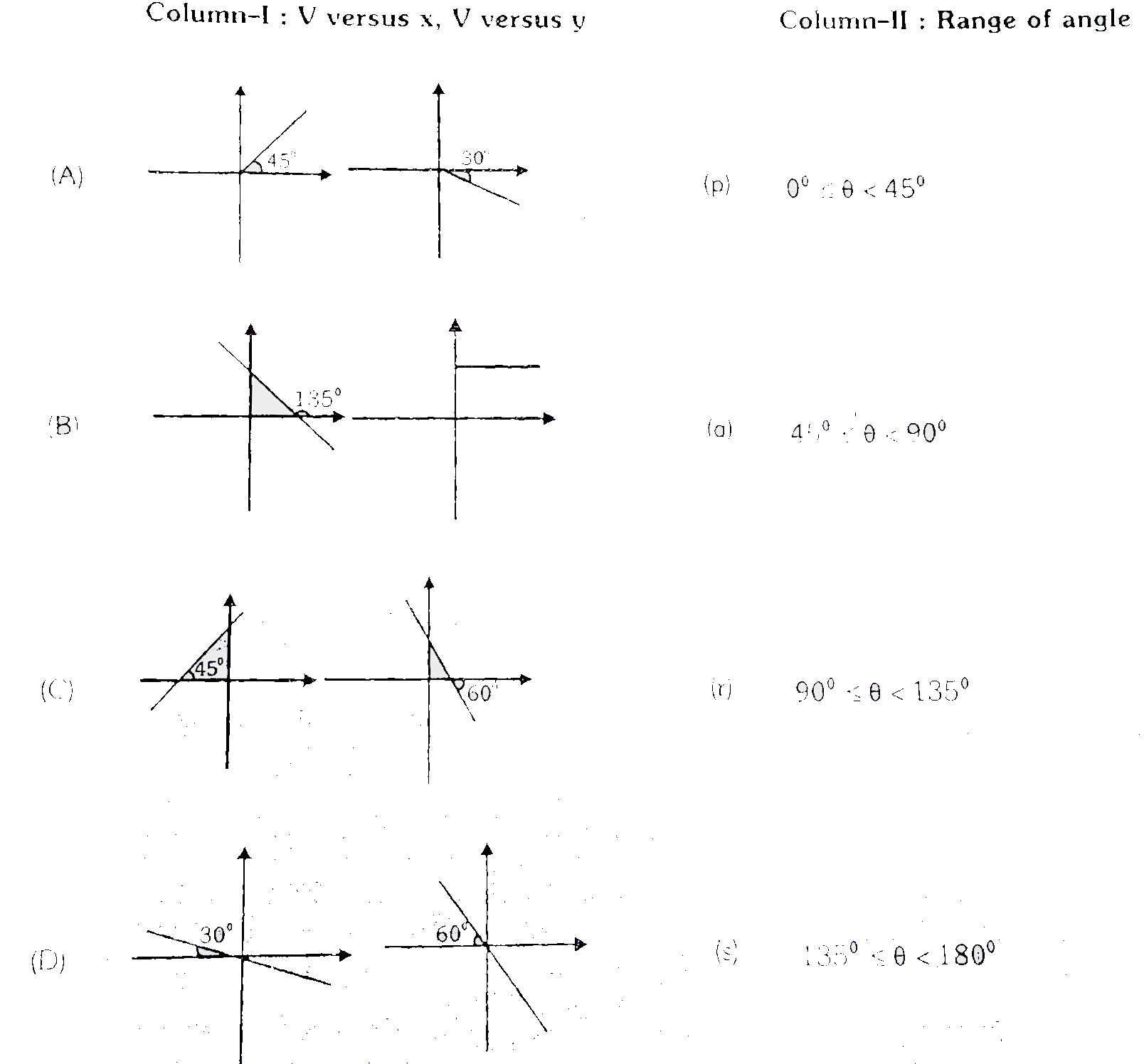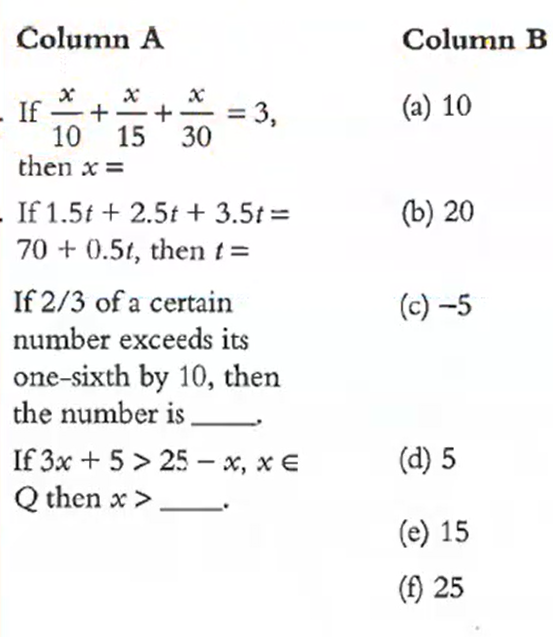Column I shows graphs of electric potential V versus x and Y in a certain region for four situations Column II shows the range of angle which the electric field vector makes with positive x-direction.

The correct Answer is:[(A)S;(B)P;(C)R;(D)Q]
(A) Ex=(−dvdx)ˆi=−1ˆi
Ey=(−dvdx)ˆj=1√3ˆj
tanθ=1√31=30∘
θ=150∘
(B) Ex=(−dvdx)ˆi=+1ˆi<br>E_(y)=(-(dv)/(dx))hat(j)=0<br>theta=0^(@)<br>E_(x)=(-(dv)/(dx))hat(i)=-1hat(i)<br>E_(y)=(-(dv)/(dx))hat(j)=+sqrt(3)hat(j)<br>theta=120^(@)<br>(D)E_(x)=(-(dv)/(dy))hat(j)=-(-sqrt(3))hat(j)=sqrt(3)hat(j)<br>vec(E)=-(deltaV)/(deltax)-(deltaV)/(deltay)hat(j)<br>(A) vec(E) =-hat(i)+1/sqrt(3)hat(j) theta=150^(@)<br>(B)vec(E)=+hat(i)+0hat(j) theta=0^(@)<br>(C)vec(E)=-hat(i)+sqrt(3)hat(j) theta=120^(@)<br>(D)vec(E)=1/sqrt(3)hat(i)+sqrt(3)hat(j) theta=tan^(-1)(3) 60^(@) lt theta lt 90^(@)


Topper's Solved these Questions
Similar Questions
Find the value of : (log)8127
View SolutionBalls are drawn one-by-one without replacement from a box containing 2 black, 4 white and 4 rd balls till all the balls are drawn. Find the probability that the balls drawn are in the order 2 black, 4 white and 3 red.
View SolutionColumn-I show graph of electric potential V versus x and y in a certain region for four situations. Column-II shows the range of angle which the electric field vector makes with positive x-direction

View SolutionWhich of the following are correct chain isomers of butane ? (i)
View SolutionDetermine the point of symmetry of a regular hexagon.
View SolutionMatch the following Column A to Column B

View SolutionMatch the following Column A to Column B

View SolutionMatch the following Column A to Column B

View SolutionThe inequation represented by the graph given below is :
View SolutionThe inequation that best describes the graph given below is _________
View SolutionThe inequation that best describes the following graph is _________
View SolutionWhich inequations represent the shaded region in the given figure
View SolutionMatch the followings (column I with column II)
ltimg src="https://d10lpgp6xz60nq.cloudfront.net/physics_images/NCERT_BIO_XI_C03_E01_011_Q01.png" width="80%"gt
View SolutionMatch the terms in column I with those in column II: ltimg src="https://d10lpgp6xz60nq.cloudfront.net/physics_images/NCERT_BIO_XI_C07_E01_011_Q01.png" width="80%"gt
View SolutionMatch column I with column II
ltimg src="https://d10lpgp6xz60nq.cloudfront.net/physics_images/NCERT_BIO_XI_C16_E01_002_Q01.png" width="80%"gt
View Solution
